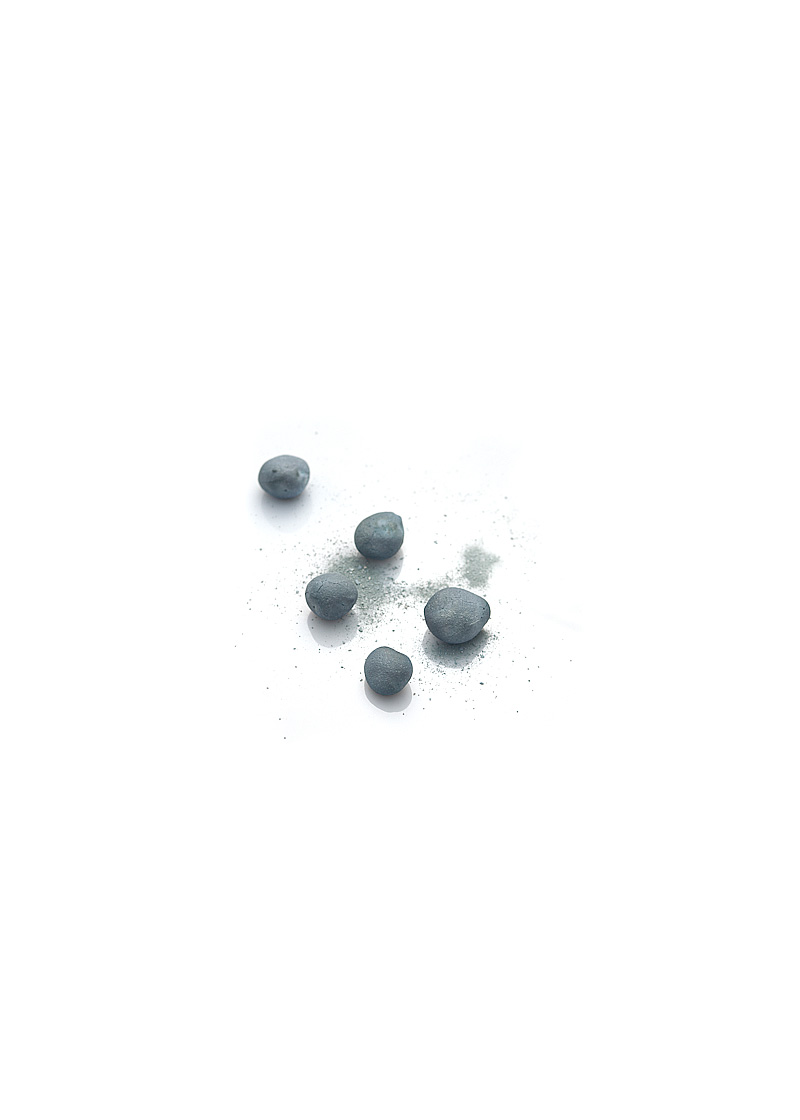
A digression, if I may.
I bought the Mugaritz cookbook on the recommendation of a friend several weeks ago. It’s sort of blowing my mind; it’s a little like an intersection of Alinea style and sensitivity with Noma naturalistic aesthetic (side note: I realize that clumsily-describing the efforts of these chefs the way high-schoolers describe bands is terrible; bear with me). The chefs at Mugaritz focus on immediately-local ingredients and take much of their inspiration from their surroundings. A neat comment in the book: they want diners to eat things there that they could never eat anywhere else, a lofty goal driven by their insistence of finding and using very local ingredients that just can’t be found anywhere outside a 5-mile radius of the restaurant.
The cookbook is inspiring and fascinating. One section of the book was particularly captivating: it describes one of Mugartiz’s chef’s fascination with kaolin. Having never heard this word, I started doing research on it. Kaolin is basically a very fine white clay. Collected from Wikipedia’s page about it:
- Kaolin is used in ceramics, medicine, coated paper, as a food additive, in toothpaste, as a light diffusing material in white incandescent light bulbs, and in cosmetics. It is generally the main component in porcelain.
- The largest use is in the production of paper, including ensuring the gloss on some grades of paper.
- Kaolinite has also seen some use in organic farming, as a spray applied to crops to deter insect damage, and in the case of apples, to prevent sun scald.
- Kaolin is extensively used as a paint or white wash in traditional stone masonry homes in Nepal.
- In April 2008, the US Naval Medical Research Institute announced the successful use of a kaolinite-derived aluminosilicate nanoparticle infusion in traditional gauze, known commercially as QuikClot Combat Gauze.
- A folk medicine use is to soothe an upset stomach, similar to the way parrots (and later, humans) in South America originally used it. More recently, industrially-produced kaolinite preparations were formerly common for treatment of diarrhea; the most common of these was Kaopectate (the “pec” in the name refers to pectin, the other main ingredient in this stomach-soother. Neat!).
In shopping for it, I also found many people seem to use it for skincare masks and other dermatological uses. I bought a bag off Amazon to have a play with it.
Mixing kaolin with water results in a slurry that tastes remarkably like kaopectate; the flavor is mild and subtle but earthy, and the texture is slightly gritty. In short, it takes some effort to pretend you’re not eating fine clay. Mugaritz mixes this slurry with lactose, a sugar found most notably in milk. Why they do this I’m not terribly sure; I found lactose to be slow to dissolve and its sweetness is very subtle (it’s about 20% as sweet as table sugar). I presume it’s meant to offset the slight flavor from the kaolin, and perhaps also to add body to the slurry, but honestly I’m not sure.
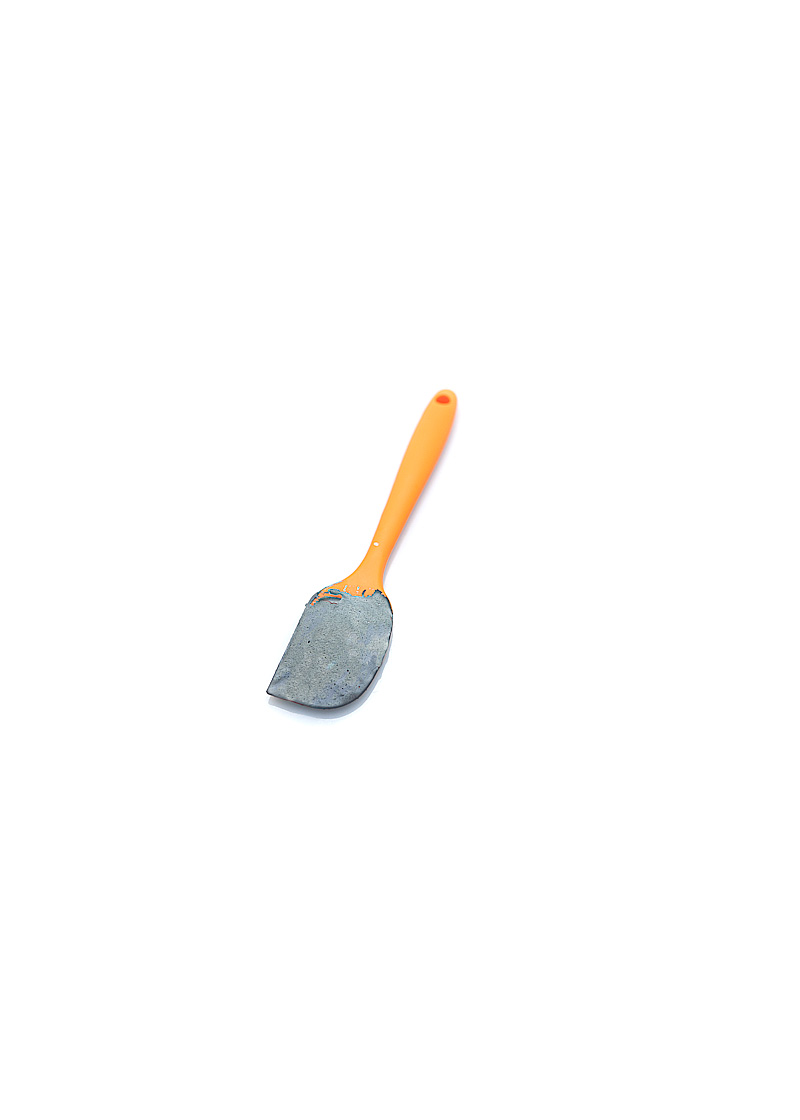
The thin kaolin mixture formed a crispy, hard, incredibly lightly-flavored ‘shell’ around the spatula. If I tapped it on a table, the mixture cracked. This was my “rock paint”.
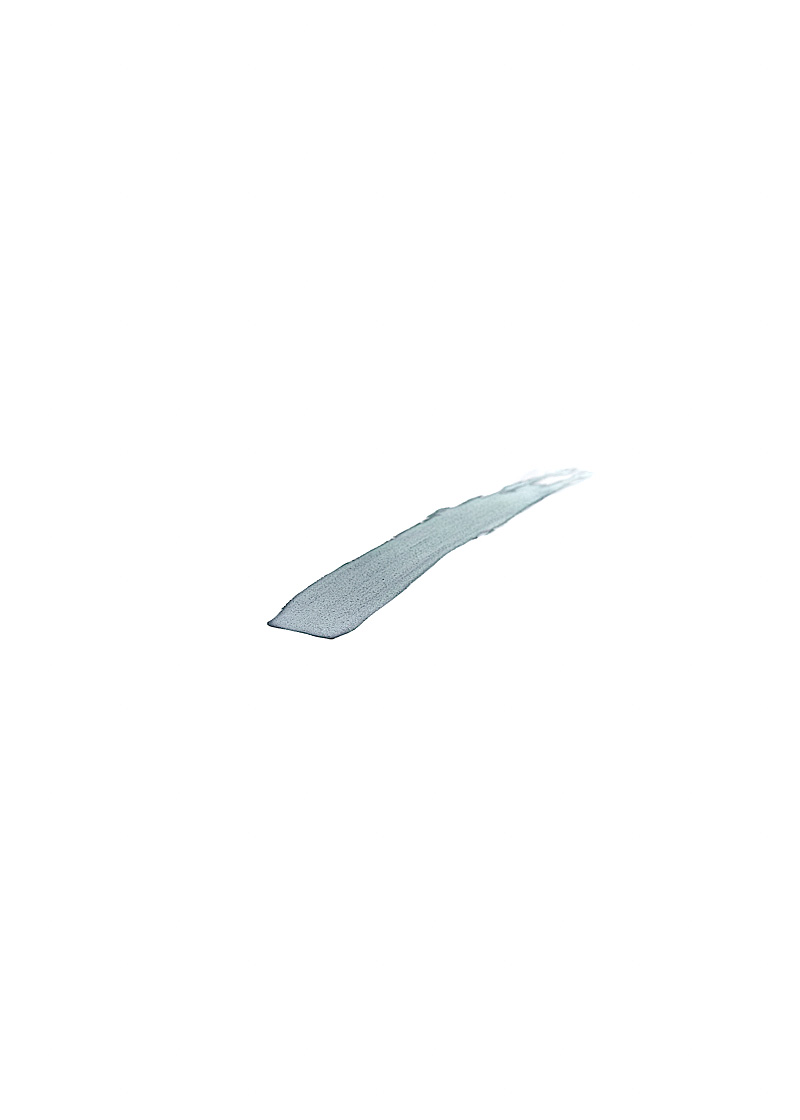
For the rock forms themselves, I bought several small (half-dollar-diameter) potatoes from Piedmont Grocery. I boiled these potatoes until they were very soft and silky inside, then dipped them in the kaolin mixture and left them to dry/warm in a low-temp oven for several minutes.
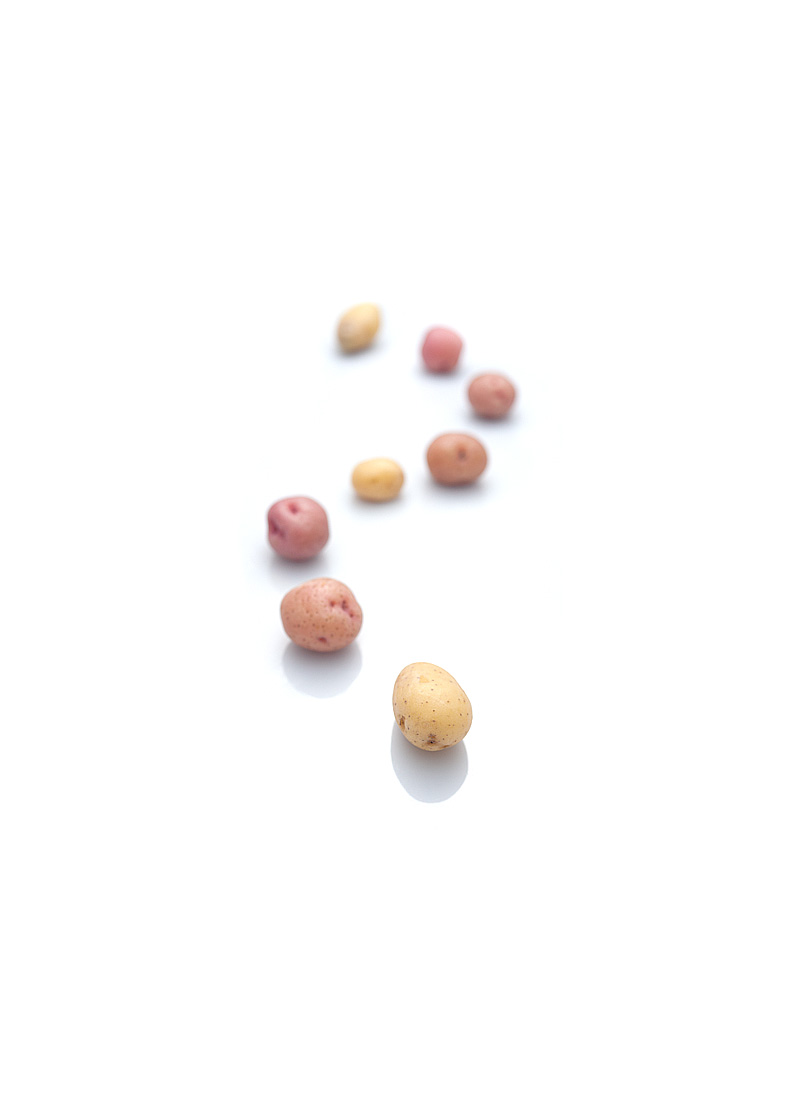
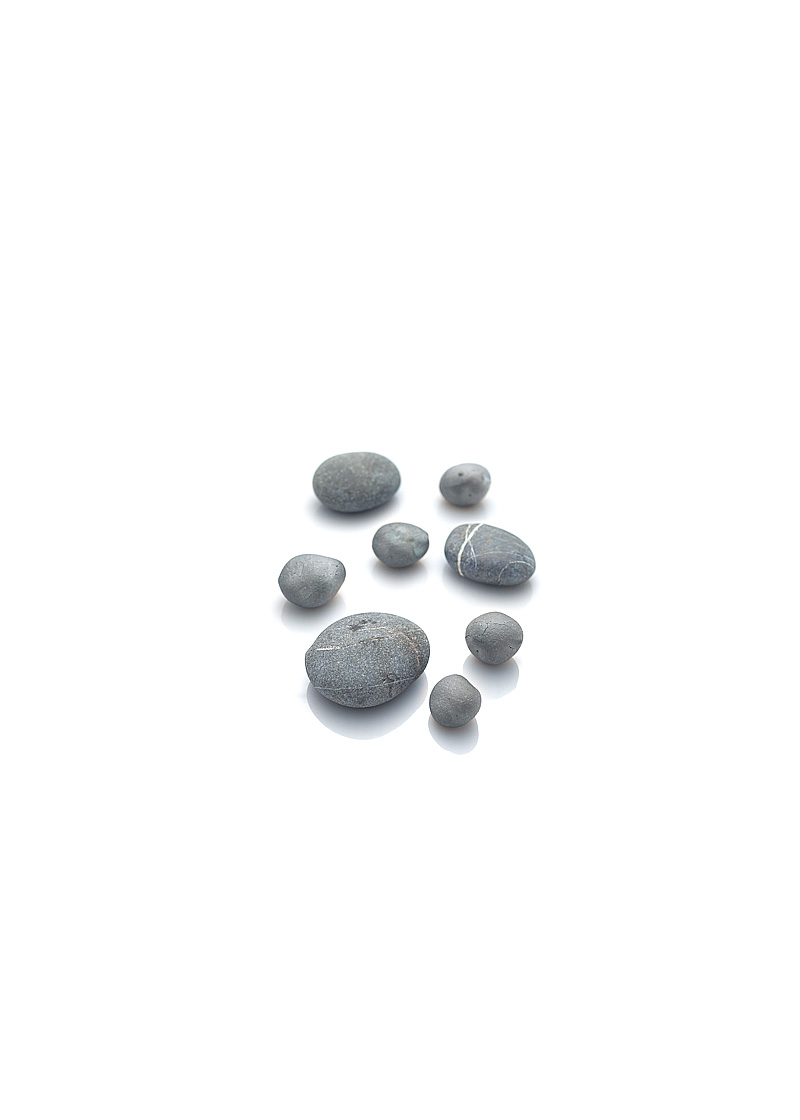
The ‘rocks’ were paired with a simple garlic aioli. My exposure to garlic aioli so far has largely been that of what you can find most everywhere in New Zealand, which is to say ‘lightly-garlicy mayonnaise’. The recipe offered in the book is quite a bit different. I start with the cloves from a head of garlic, and I poach these very slowly over low, low heat in olive oil. Because of the simplicity here, I wanted to use the best ingredients I could find. Over Christmas, I read a book about olive oil and how one can identify very high-quality oil. For this aioli, I found some newly-bottled oil from Sonoma that I chose. A trademark of really fresh, good olive oil is that it should leave a peppery sensation in the back of the throat; this indicates presence of antioxidants similar to those found in aspirin (and the health benefits associated with them). Really good olive oil should make you cough a little. The stuff I bought did this, and that’s what I poached my garlic in for nearly 4 hours, very slowly, until the cloves were very tender and impregnated with the oil. I pushed the cloves through a chinois, then blended them with an egg yolk before slowly drizzling in a bit more oil to yield a creamy aioli. 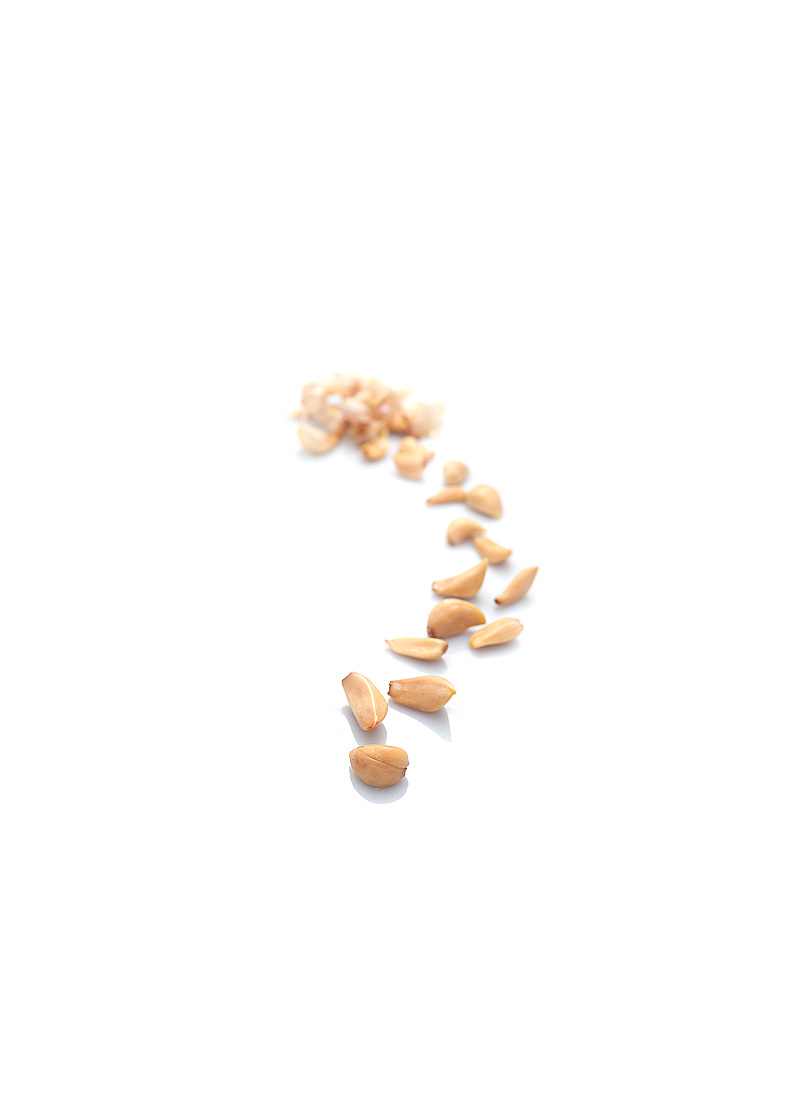
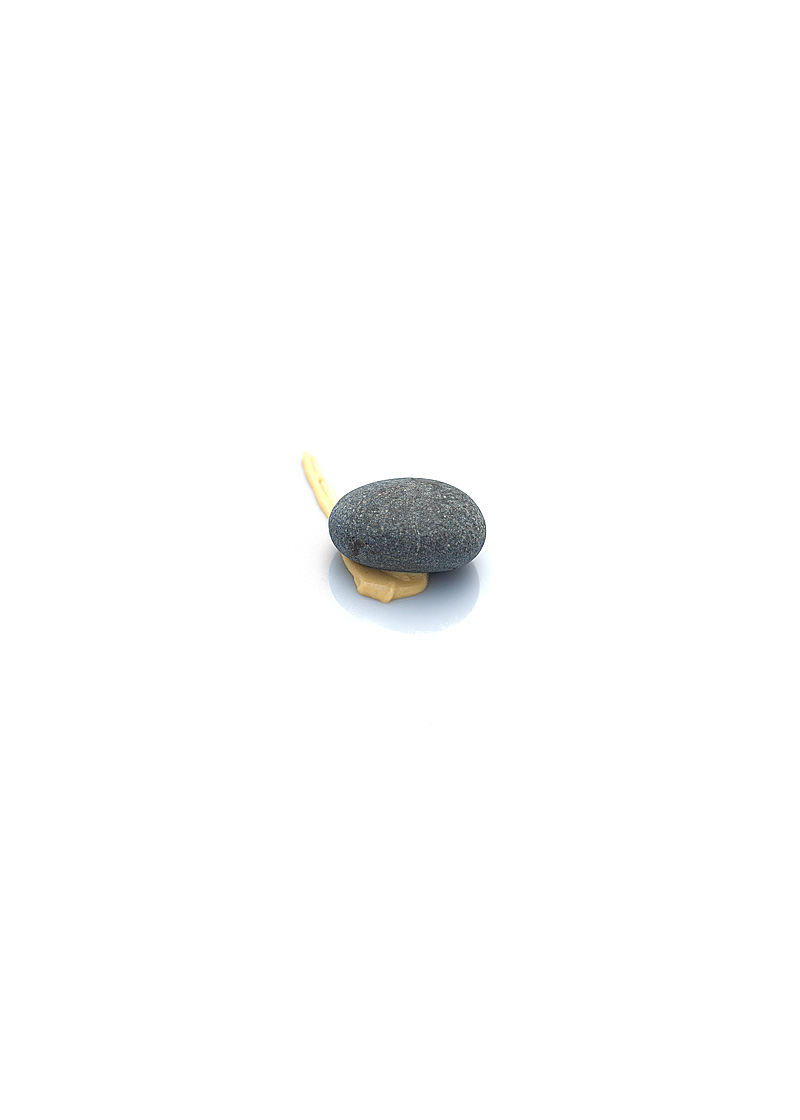
The flavors here aren’t really anything surprising…just warm potato and garlic. More what I find neat here is the trompe l’oeil, the messing with expectations. And, of course, the pretty wild use of an already-pretty-wild substance: kaolin.
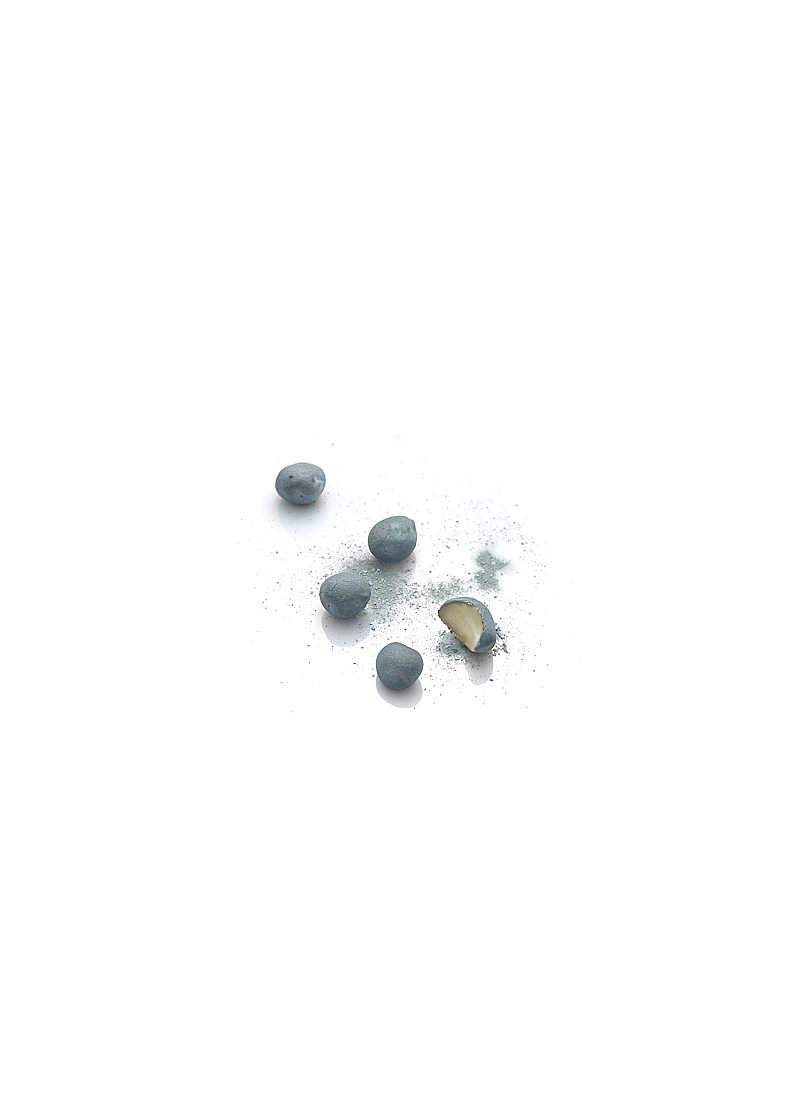
That is a fascinating book indeed. I was planning on giving those edible stones a try for a small dinner party we are having next month. Glad you tried them first though 🙂
BTW, I really like the new look of the site.
Hey thanks for that, Eli!
Good luck making the stones! I’d love to hear how they turned out for ya.
Ha! I love this. It would be super-fun to serve these at a party and watch the progression of puzzlement, surprise, and (hopefully) delight in everyone’s reactions as they ate these.